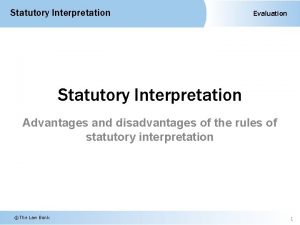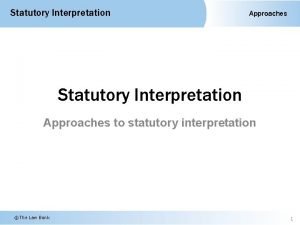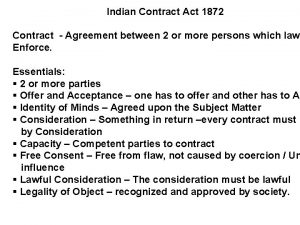THE INDIAN CONTRACT 1872 n n Section 2









- Slides: 9

THE INDIAN CONTRACT , 1872

n n Section 2 (h) defines a contract as “ an agreement enforceable by law” Thus to make a contract there must be An agreement The agreement shall be enforceable by law. CONTRACT = AGREEMENT + ENFORCEABILITY AT LAW

Agreement According to Section 2(e) an agreement is defined as “ every promise and every set of promises forming the consideration for each other”. A promise is defined as an accepted proposal as Section 2(b) says “ a proposal when accepted becomes a promise “ Therefore it can be said that an agreement is an accepted proposal. AGREEMENT = OFFER + ACCEPTANCE

n n Consensus ad idem – In agreement , there must be consensus ad idem. This means that , the parties to the agreement must have agreed the subject matter of the agreement in the same sense and at the same time.

n An agreement is said to enforceable at law if it creates some legal obligations. n All agreements are not enforceable by law and therefore, all agreements are not contracts. All contracts are agreements. n

Essentials of a valid contract 1. 2. 3. 4. 5. 6. 7. 8. 9. OFFER AND ACCEPTANCE INTENTION TO CREATE LEGAL RELATIONSHIP LAWFUL CONSIDERATION CAPACITY OF PARTIES FREE AND GENUINE CONSENT LAWFUL OBJECT AGREEMENT NOT DECLARED VOID CERTAINITY AND POSSIBILITY OF PERFORMANCE LEGAL FORMALITIES

Essentials of a valid contract 1. OFFER AND ACCEPTANCE: The agreement should be between two parties. An agreement is the result of a proposal or offer by one party followed by its acceptance by the other. 2. INTENTION TO CREATE LEGAL RELATIONSHIP: When the two parties enter into an agreement , their intention must be to create legal relationship between them. If there is no such intention on the part of the parties , there is no contract between them. 3. LAWFUL CONSIDERATION: Consideration means an advantage or benefit moving from one party to the other. IN simple words, it means “Something in Return”. The agreement is legally enforceable only when both the parties give something and get something in return.

Essentials of a valid contract 4. CAPACITY OF PARTIES – COMPETENCY: The parties to the agreement must be capable of entering into a valid contract. The agreement should be between the parties who are competent to contract. 5. FREE AND GENUINE CONSENT: There should be free consent of the parties, when they enter into the agreement. The consent of the parties is said to be free when they are of the same mind on all the material terms of the contract. There is absence of free consent if the agreement is induced by coercion , undue influence , fraud and misrepresentation. 6. LAWFUL OBJECT: The object of the agreement must be lawful.

7. AGREEMENT NOT DECLARED VOID: The agreement must not be one, which has been declared to be void. 8. CERTAINITY AND POSSIBILITY OF PERFORMANCE: The agreement must be certain and not vague or indefinite. 9. LEGAL FORMALITIES: The Contract should be in writing. The document in which the contract is incorporated is to be stamped , has to be registered.















